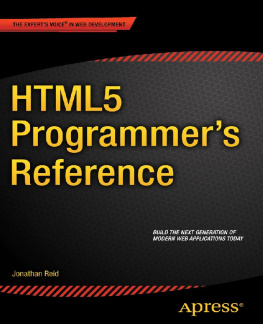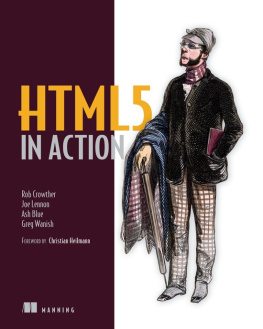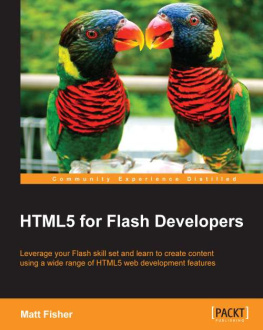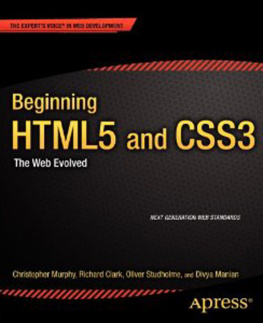Pro HTML5 Programming, Second Edition
Copyright 2011 by Peter Lubbers, Brian Albers, and Frank Salim
All rights reserved. No part of this work may be reproduced or transmitted in any form or by any means, electronic or mechanical, including photocopying, recording, or by any information storage or retrieval system, without the prior written permission of the copyright owner and the publisher.
The W3C logo on the front cover is licensed under Creative Commons Attribution 3.0. The Creative Commons license applies to the use of the logo provided on the front cover and no other content from this book.
ISBN-13 (pbk): 978-1-4302-3864-5
ISBN-13 (electronic): 978-1-4302-3865-2
Trademarked names, logos, and images may appear in this book. Rather than use a trademark symbol with every occurrence of a trademarked name, logo, or image we use the names, logos, and images only in an editorial fashion and to the benefit of the trademark owner, with no intention of infringement of the trademark.
The use in this publication of trade names, trademarks, service marks, and similar terms, even if they are not identified as such, is not to be taken as an expression of opinion as to whether or not they are subject to proprietary rights.
President and Publisher: Paul Manning
Lead Editor: Ben Renow-Clarke
Technical Reviewer: Tony Pye
Editorial Board: Steve Anglin, Mark Beckner, Ewan Buckingham, Gary Cornell, Morgan Ertel, Jonathan
Gennick, Jonathan Hassell, Robert Hutchinson, Michelle Lowman, James Markham, Matthew Moodie,
Jeff Olson, Jeffrey Pepper, Douglas Pundick, Ben Renow-Clarke, Dominic Shakeshaft, Gwenan
Spearing, Matt Wade, Tom Welsh
Coordinating Editors: Debra Kelly and Jennifer L. Blackwell
Copy Editors: Heather Lang, Andy Rosenthal, and Nancy Sixsmith
Compositor: Bytheway Publishing Services
Indexer: SPI Global
Artist: SPI Global
Illustrations by: Peter Cohen
Cover Designer: Anna Ishchenko
Distributed to the book trade worldwide by Springer Science+Business Media, NY, 233 Spring Street, 6th Floor, New York, NY 10013. Phone 1-800-SPRINGER, fax (201) 348-4505, e-mail orders-ny@springer-sbm.com, or visit www.springeronline.com.
For information on translations, please e-mail rights@apress.com, or visit www.apress.com.
Apress and friends of ED books may be purchased in bulk for academic, corporate, or promotional use. eBook versions and licenses are also available for most titles. For more information, reference our Special Bulk SaleseBook Licensing web page at www.apress.com/bulk-sales.
The information in this book is distributed on an as is basis, without warranty. Although every precaution has been taken in the preparation of this work, neither the author(s) nor Apress shall have any liability to any person or entity with respect to any loss or damage caused or alleged to be caused directly or indirectly by the information contained in this work.
Any source code or other supplementary materials referenced by the author in this text is available to readers at www.apress.com. For detailed information about how to locate your book's source code, go to www.apress.com/source-code/.
For my beautiful wife, Vittoria,
and for my sons, Sean and Rocky. I am so proud of you!
And to our catCorneliusmay you rest (and
hunt) in peace.
Peter Lubbers
For John. You make it all worthwhile.
Brian Albers
For people who still read books.
Frank Salim
Contents at a Glance



















Contents



















Foreword
In June 2004, representatives from the semantic web community, major browser vendors, and the W3C met in San Jose, California to discuss the standards body's response to the rise of web applications. At the end of the second day, a vote was held to decide whether the W3C should augment HTML and the DOM to address the new requirements of web applications. Minutes from the event record the anonymous and curious result, 8 for, 14 against.
This schism lead to a divergence in effort: two days later, the WHATWG was formed from the major browser vendors to solve emerging issues. Meanwhile, the W3C pushed forward with the XHTML2 specification, only to drop it five years later to focus on an aligned HTML5 effort with the WHATWG.

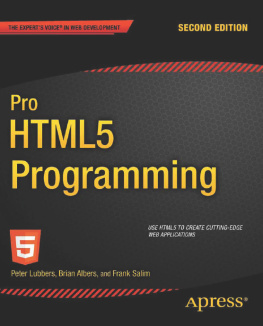
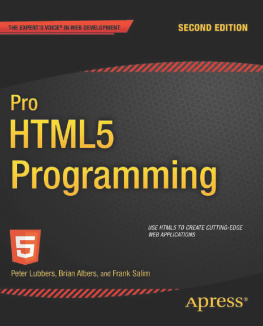
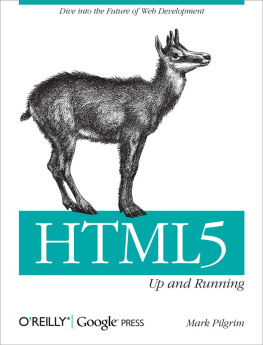
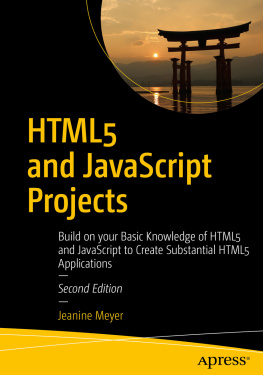
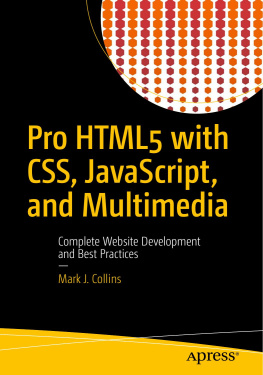
![Jeanine Meyer [Jeanine Meyer] - HTML5 and JavaScript Projects: Build on your Basic Knowledge of HTML5 and JavaScript to Create Substantial HTML5 Applications](/uploads/posts/book/120565/thumbs/jeanine-meyer-jeanine-meyer-html5-and.jpg)
